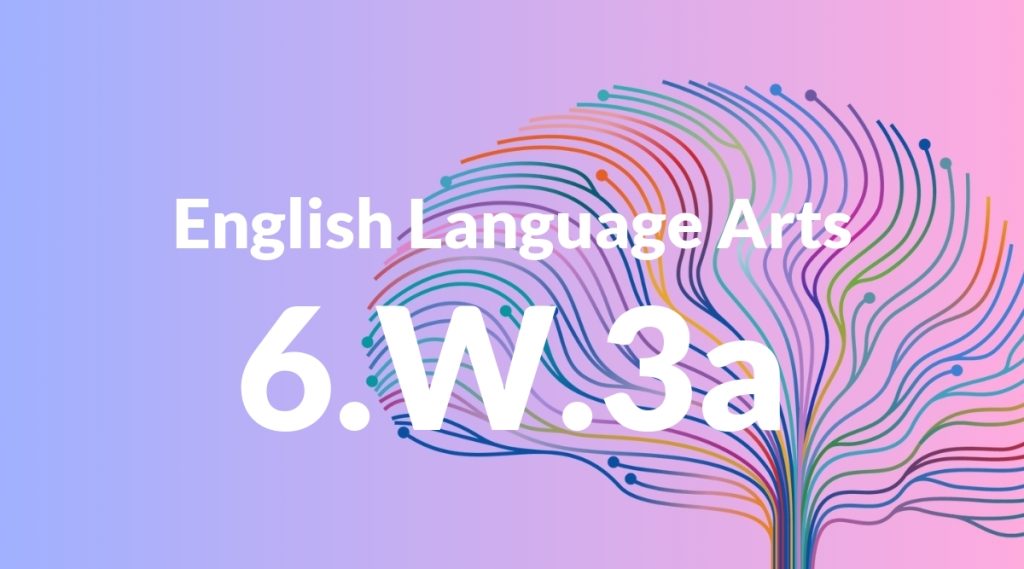Standard: 6.W.3a – Engage and orient the reader by establishing a context and introducing a narrator and/or characters; organize an event sequence that unfolds naturally and logically.
Grade level: Grade 6
Subject: English Language Arts
Domain: Writing
Teacher Overview
This standard focuses on helping students develop the skills to write narratives that engage and orient the reader by establishing a context and introducing a narrator and/or characters. It emphasizes the importance of organizing events in a logical and natural sequence, which is crucial for clear and effective storytelling. Students should be familiar with basic narrative elements such as plot, setting, and character. They should also have experience writing simple stories with a clear beginning, middle, and end.
After mastering this standard, students will be able to write more complex and engaging narratives. They will learn to use dialogue, descriptive details, and varied sentence structures to enhance their writing.
Common Misconception 1
Some students may not understand the importance of a clear sequence of events in a narrative. They might write disjointed stories that are hard to follow.
Intervention 1
Use graphic organizers like story maps to help students plan their narratives. Encourage them to outline the sequence of events before they start writing.
Common Misconception 2
Students might think that characters are not necessary for a good story. They may write narratives that lack depth and engagement.
Intervention 2
Show students examples of engaging stories with well-developed characters. Discuss how characters contribute to the story and help the reader connect with the narrative.
Prerequisite Knowledge
Students should have a basic understanding of sentence structure, paragraph organization, and the ability to write simple narratives with a clear beginning, middle, and end.
Subsequent Knowledge
Students will develop the ability to create more complex narratives, including the use of dialogue, descriptive details, and varied sentence structures. They will also learn to revise and edit their work for clarity and coherence.
Instructional Activities
- Using graphic organizers to plan narratives
- Writing and sharing short stories in peer groups
- Analyzing well-written narratives to identify key elements
- Creating character profiles before writing
- Revising drafts to improve the sequence of events
- Incorporating dialogue and descriptive details in narratives




